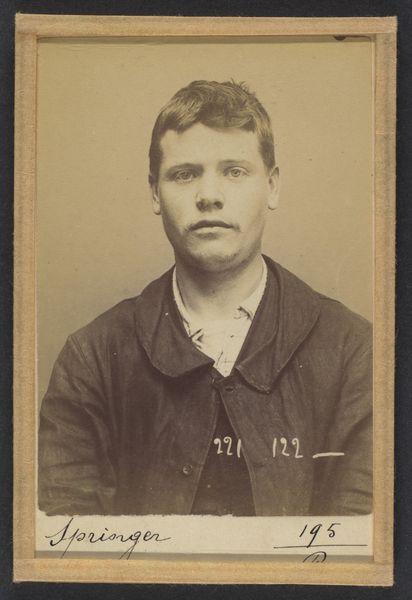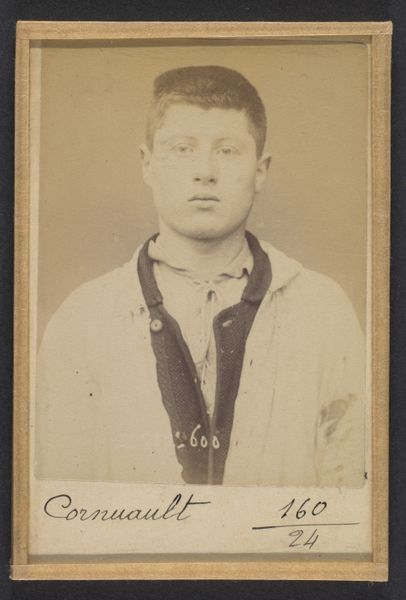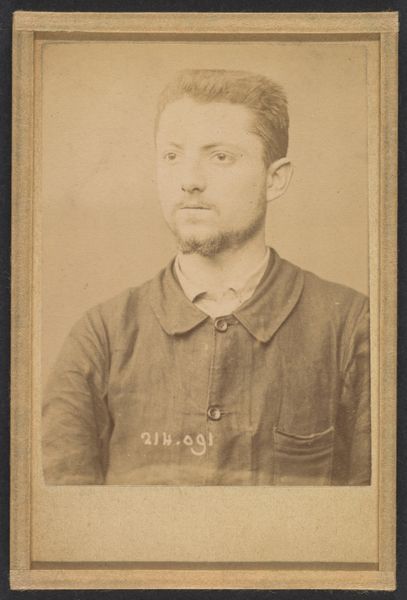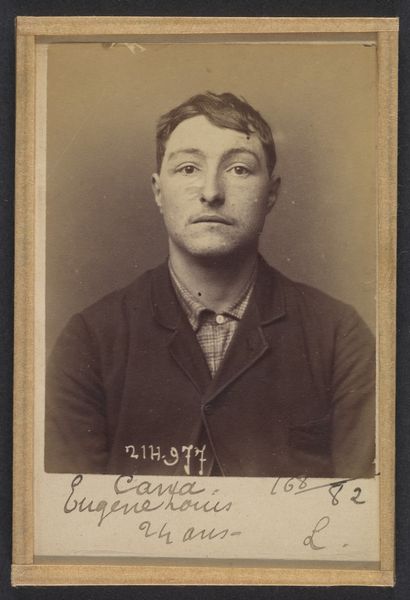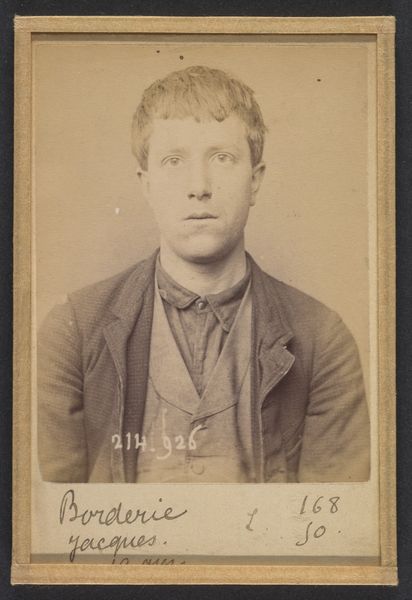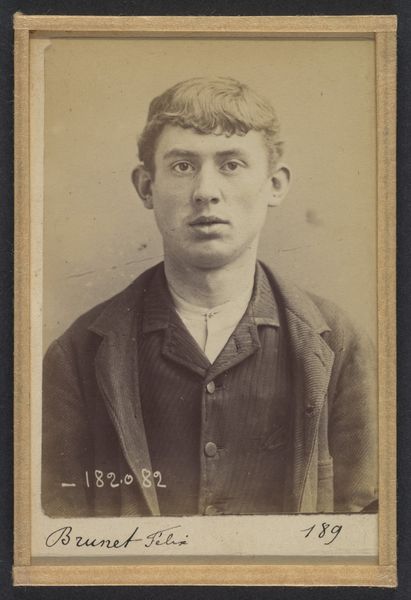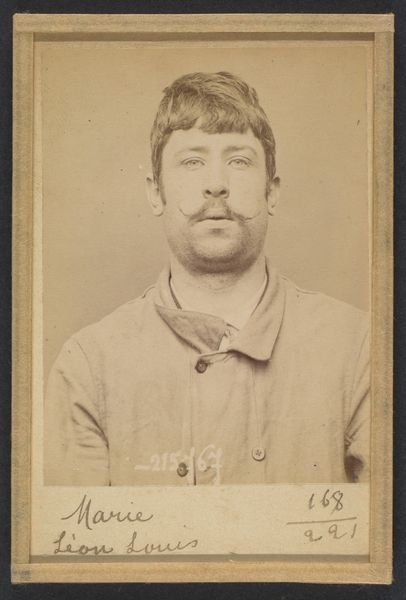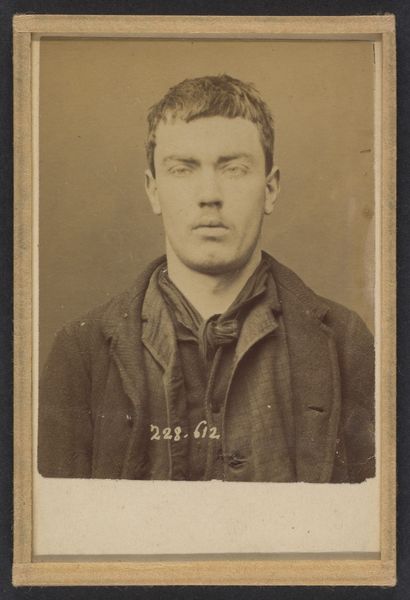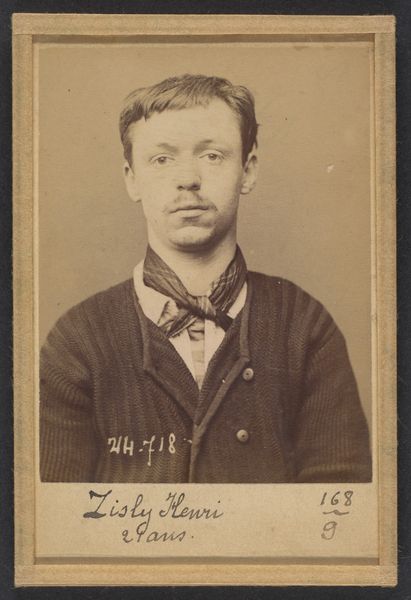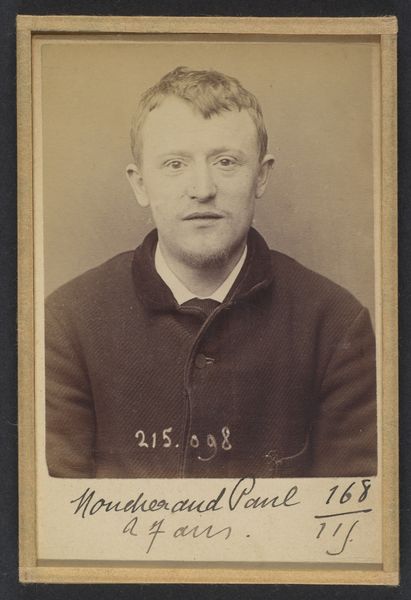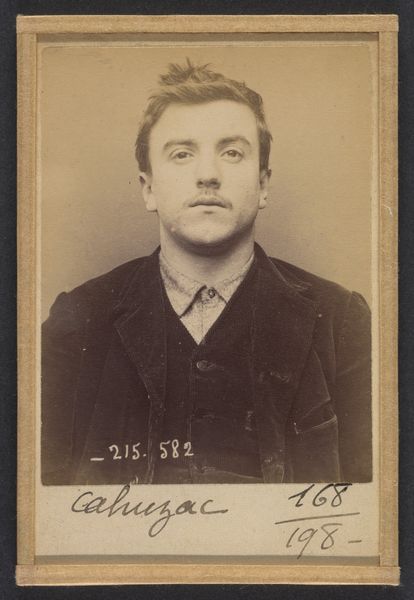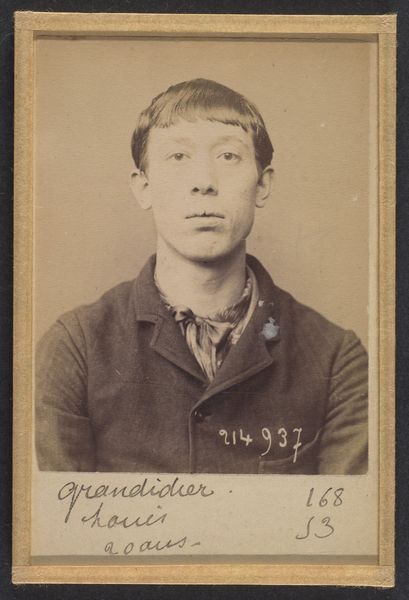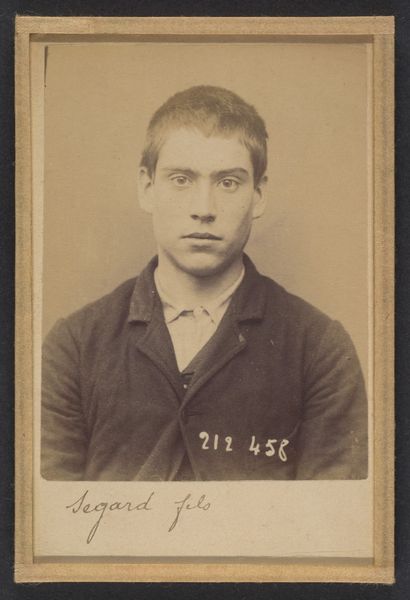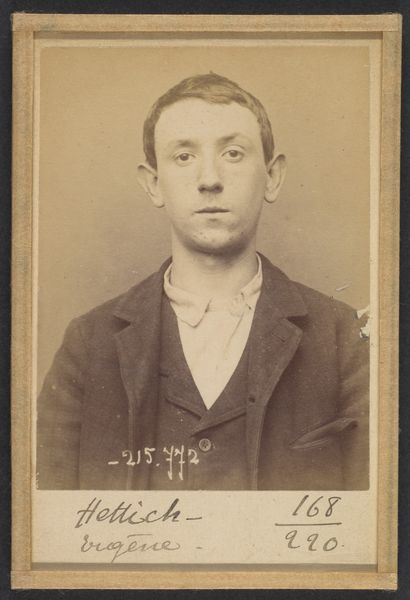
Monzon. Lucien, Henri, Baptiste. 18 ans, né à Paris XXe. Couvreur. Anarchiste. 23/3/94. 1894
0:00
0:00
photography, gelatin-silver-print
#
portrait
#
photography
#
gelatin-silver-print
#
19th century
#
men
#
history-painting
Dimensions: 10.5 x 7 x 0.5 cm (4 1/8 x 2 3/4 x 3/16 in.) each
Copyright: Public Domain
Editor: Here we have a gelatin silver print, a portrait by Alphonse Bertillon, created in 1894. It's titled "Monzon. Lucien, Henri, Baptiste. 18 ans, né à Paris XXe. Couvreur. Anarchiste. 23/3/94." which seems to give the subject’s name and some other identifiers. It has quite an unsettling and clinical feeling to it. What strikes you about it? Curator: The intensity of the gaze, wouldn't you say? The stark presentation, with that detailed inscription beneath, transforms a mere portrait into a potent cultural symbol. It speaks of a very specific time and ideological conflict. Consider, the sitter, a self-declared anarchist… what emotions are evoked by that label, and how might those feelings shift with time and knowledge? Editor: I suppose anarchism would have had a very different connotation then, maybe more frightening. How much can we really read into these symbols and labels? Curator: Symbols gain their power through collective memory and cultural continuity. The label "anarchist," then as now, might conjure feelings of disorder, yet it simultaneously reflects ideals of freedom and autonomy. Bertillon’s portrait freezes a moment where an individual’s identity clashes with societal perception. Is his apparent vulnerability enhanced or undermined by the "anarchist" descriptor? Editor: That makes me think about the power of photography itself. This photograph fixes him in time and assigns him these labels that may not fully represent him. Curator: Precisely. And how the use of photography changed portraiture, transforming it from primarily commemoration to also having these applications in policing. What did you notice about his clothes or lack of artifice, like the missing button on his collar, for instance? Editor: Now that you point that out, I see his attire appears to be intentionally plain, adding a very specific kind of "ordinariness". I learned a lot from this! Curator: And I hope this taught us both something new.
Comments
No comments
Be the first to comment and join the conversation on the ultimate creative platform.
